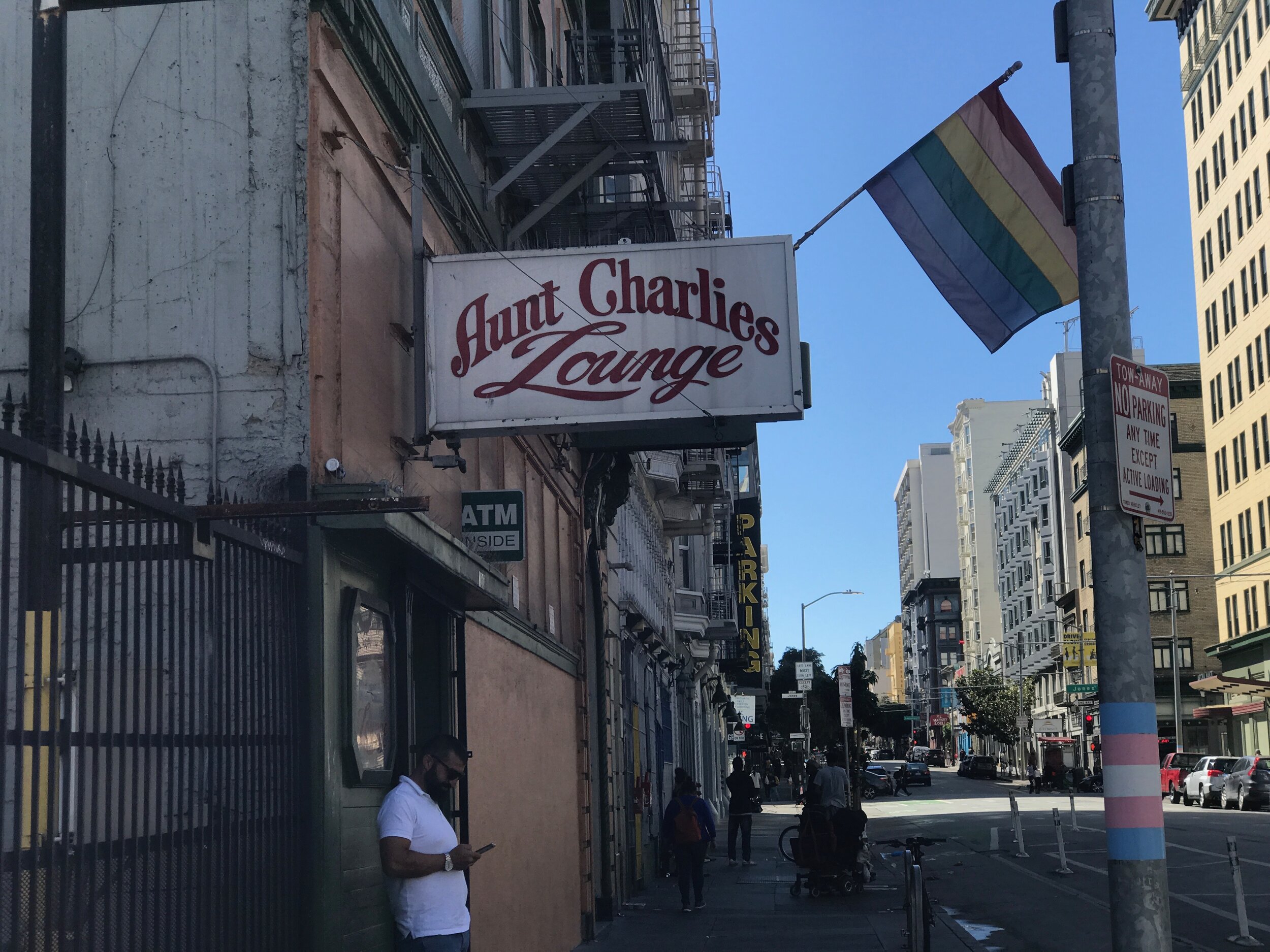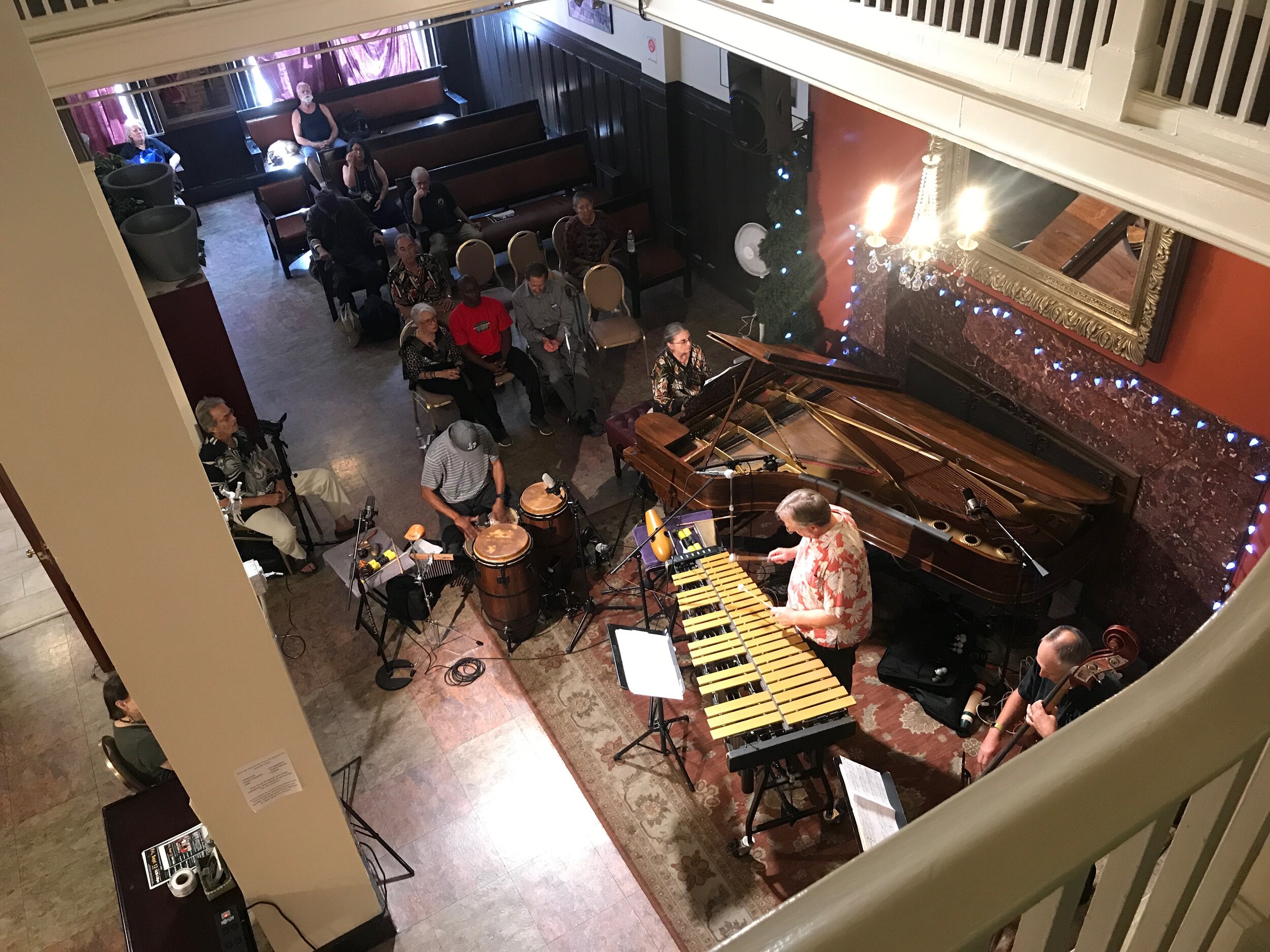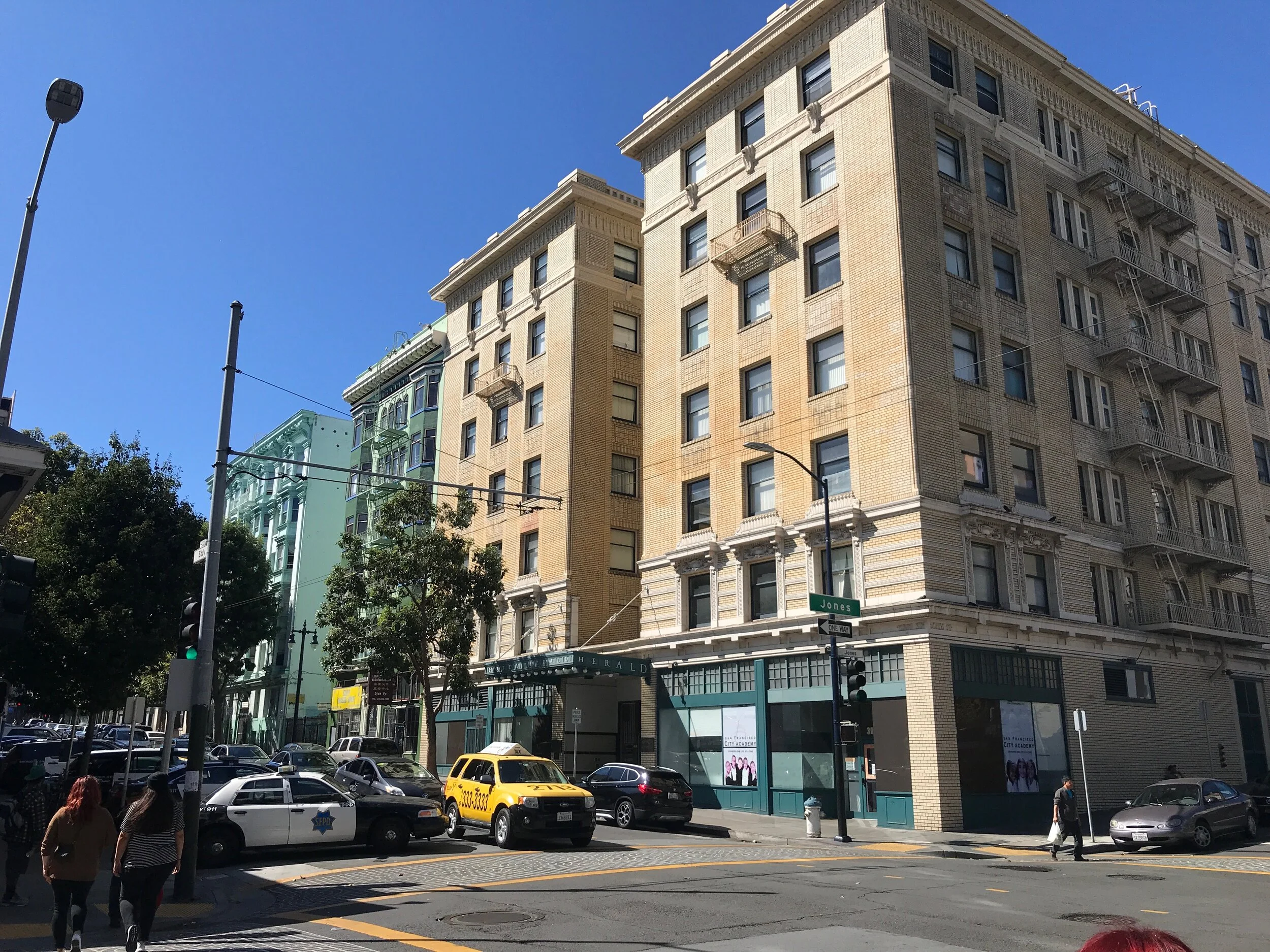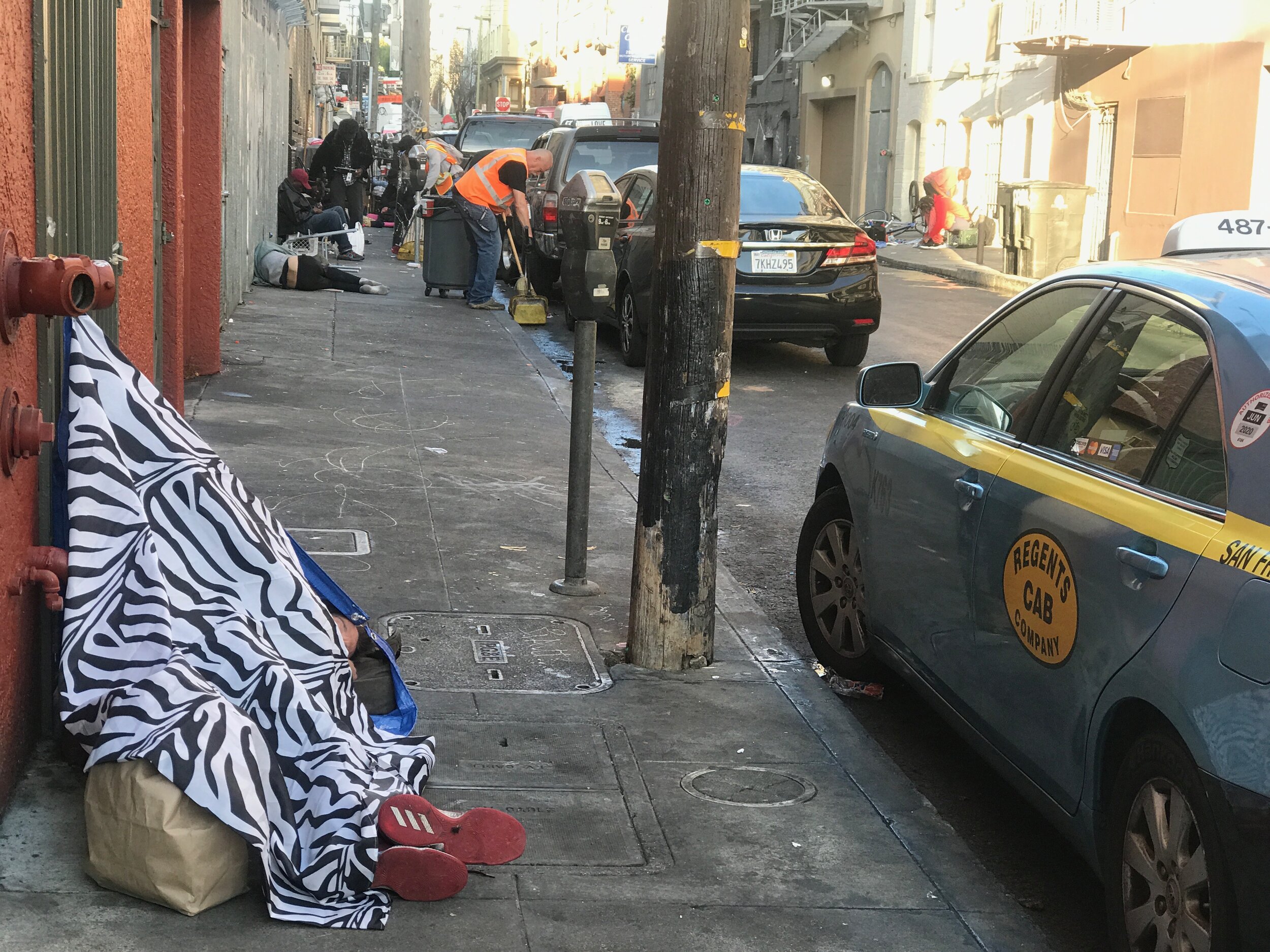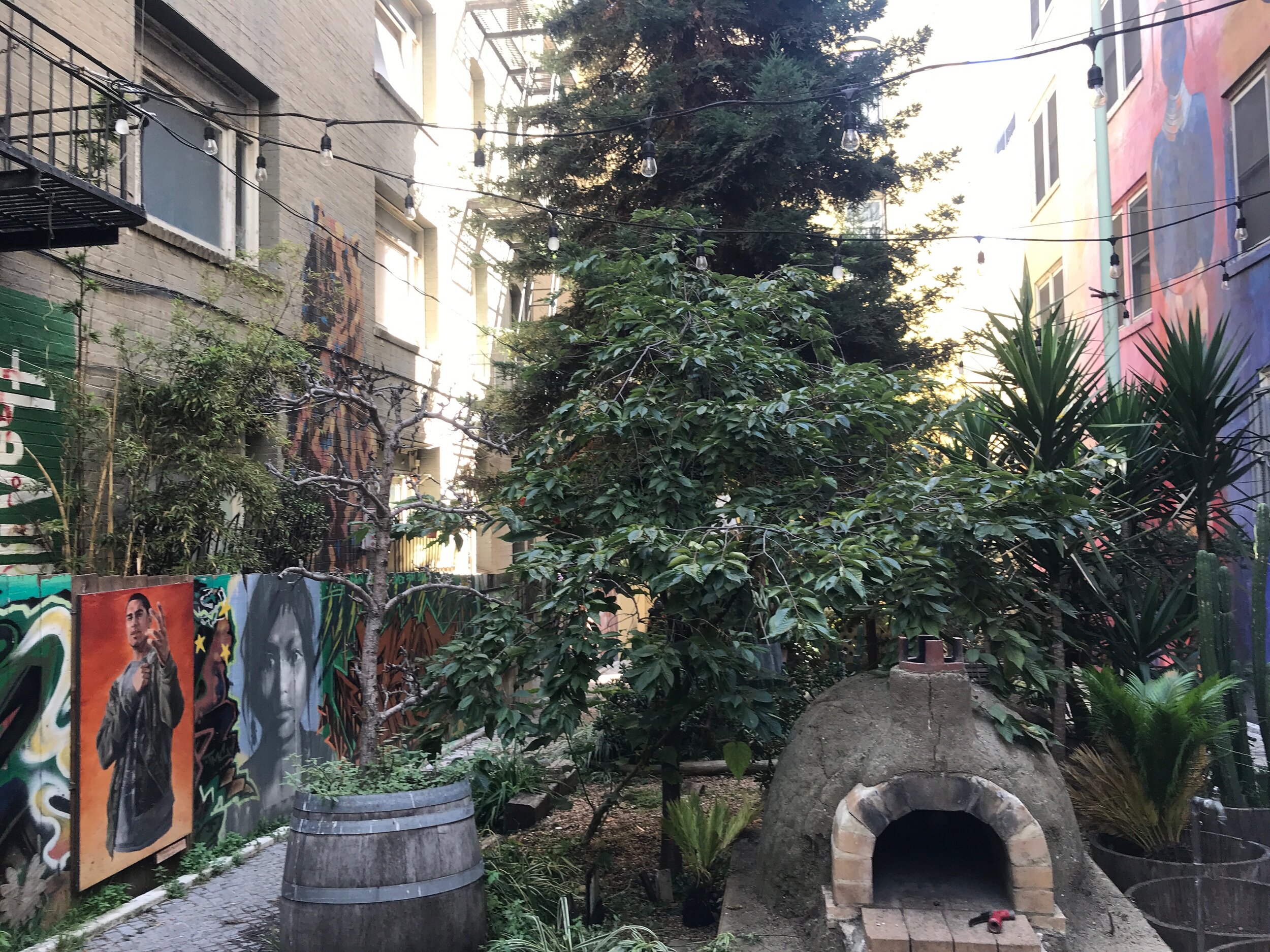Welcome to the Tenderloin
Expensive San Francisco still has a place for poor people
By Rick Holmes
Sept. 27, 2019
San Francisco – I found my way to the Tenderloin seeking the same thing that have drawn people to the neighborhood for a century: a cheap hotel room. The reviews I consulted noted the area’s prime location, but warned that it’s a sketchy neighborhood, with homeless people crowding the sidewalks.
But San Francisco is an expensive city to visit – even more expensive if you want to live here – so you make some sacrifices. I booked a room in the Tenderloin, and came to learn its story.
Like so much in San Francisco’s history, the Tenderloin’s story turns on the 1906 earthquake and fire that flattened 80 percent of the city. Officials required the neighborhood now known as the Tenderloin be rebuilt in fireproof brick and concrete, an expense that encouraged the construction of a different kind of housing: residential hotels.
These were affordable long-term rentals of single rooms, and they filled up with single people, most of them women, who could walk to jobs in the stores and offices of Market Street and the Financial District. There were no kitchens, so restaurants and clubs filled the neighborhood. Bathrooms were usually shared, so bathhouses opened to fill the gap.
The Cadillac Hotel opened barely a year after the fire, and it still offers affordable housing for 160 low-income tenants through the non-profit that now owns it. Today we call it SRO housing – single room occupancy – and it can be the closest thing to home for people who are poor, elderly, disabled, and alone. “The House of Welcome since 1907,” says the Cadillac’s website.
From the beginning, the Tenderloin lifestyle – single women, unchaperoned, meeting men at dance halls and restaurants – was a scandal to the city’s elite. For the next hundred years, the Tenderloin would continue to attract people who didn’t fit into more respectable neighborhoods, and the elite would be scandalized over and over again.
Sin and crime flourished in the Tenderloin. There were saloons, gambling rooms and brothels. Sally Rand brought her infamous “fan dance” to a Tenderloin burlesque house. Sally Stanford, who was known as the “last grand madam,” welcomed the wealthy and powerful to her brothel. Police corruption kept the party going. The neighborhood’s name originated in New York, where a police officer noted walking any other beat bought him chuck steak, but bribes in the red-light district meant he could move up to tenderloin.
The Tenderloin wasn’t just for criminals. Muhammad Ali and other boxers trained at a gym in what used to be the Cadillac Hotel’s ballroom. Jazz musicians performed and recorded in the Tenderloin; so did the Grateful Dead and other ‘60s groups. Gay men began gathering at Tenderloin bars in the 1940s, where they discovered they weren’t as alone as they had thought. Men who dressed as women found a home in Compton’s Cafeteria, though it was a home regularly invaded by the police.
One night in 1966, the transgender customers at Compton’s, known in local lore as the “screaming queens,” fought back against police harassment, breaking windows and throwing things. They chased the police out to the street, hitting them with spike-heeled shoes and heavy handbags. A plaque on the site calls it America’s first “full-scale riot for transgender and gay rights.”
Not far from there, another sidewalk plaque marks the site where America’s first full-length hard-core movie debuted. As mayor, Dianne Feinstein (now a U.S. senator) pledged to “clean up the Tenderloin.” She closed down some of the gay bars and porn shops. The AIDS crisis closed the bathhouses. But the Tenderloin remained a haven for people at the margins: runaway teens and sex workers, drug addicts and the down-and-out, refugees from the Vietnam War and immigrants from everywhere. The Tenderloin was disreputable, but it was also proud, and well-organized.
The real threat to the Tenderloin has come not from politicians but from the real estate market, which saw huge profits in its location, if only those poor people in their rundown old buildings could be pushed out of the way. But Tenderloin activists saw gentrification coming before the word was invented. They got more than 400 of the old hotels registered as historic landmarks, protecting them from demolition. They pushed zoning measures that restricted building heights, kept out new tourist hotels and protected the residential character of the neighborhood.
Other San Francisco neighborhoods have their own claims to fame. Haight-Ashbury became the center of hippie culture. The Castro became the center of LGBT activism, thanks in part to Harvey Milk. But the hippies who crowded into flats 50 years ago couldn’t afford to get in the door in today’s Haight. The smallest Castro apartments rent for $3,000 a month.
And if you want to buy in San Francisco, you’ll need to earn at least $172,000 a year. Between the influx of Silicon Valley tech money and restrictions that make it impossible to build the dense housing a growing population needs, thousands of San Franciscans have been priced out of the housing market. Homelessness is a crisis throughout California, especially in San Francisco.
But the Tenderloin remains. It’s got more SRO units per block than any place in the country. The neighborhood is a “house of welcome” for homeless people, who camp undisturbed on its sidewalks and survive on free meals and services provided by local charities. One morning I watched teams of city workers cleaning up the sidewalks, steering respectfully around the sleeping visitors and their small nests of possessions.
San Francisco needs more welcoming neighborhoods and much more affordable housing. But thanks to the Tenderloin, in one of the country’s most expensive cities, there’s still a place for poor people.
Rick Holmes can be reached at rick@rickholmes.net. You can follow his journey at www.rickholmes.net. Like him on Facebook at Holmes & Co, and follow him on Twitter @HolmesAndCo.
